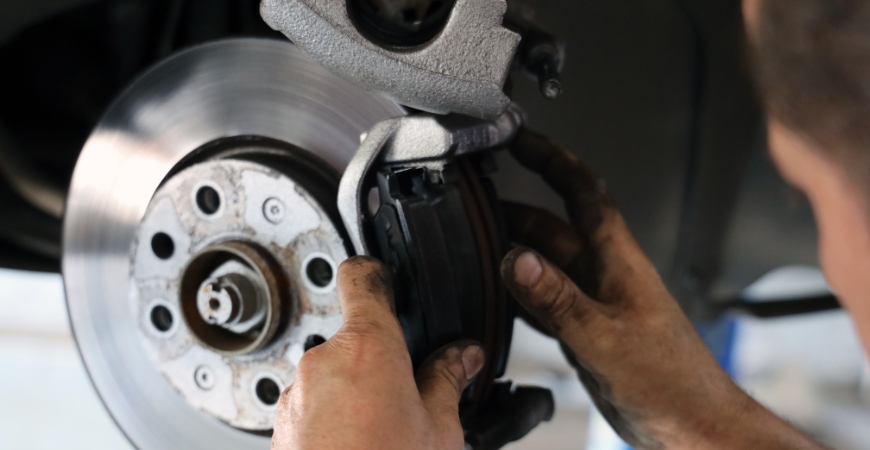Cart is empty!
Please add some product!

Menu
Please add some product!


Brake service is a critical aspect of automotive repairs, ensuring the safety and proper functioning of a vehicle.
Brake Inspection: A thorough check of the brake system is carried out to spot any issues or areas needing attention. This includes examining brake pads, rotors, calipers, brake lines, and brake fluid levels.
Brake Pad Replacement: Brake pads wear out over time due to friction against the rotors. During brake service, worn brake pads are swapped out with new ones to ensure top-notch braking performance.
Rotor Resurfacing or Replacement: If brake pads have worn down significantly or there’s damage to the rotors, resurfacing or replacement may be necessary. Resurfacing involves smoothing out any imperfections on the rotor surface, while replacement involves fitting new rotors.
Caliper Maintenance or Replacement: The brake calipers house the brake pads and play a crucial role in the braking process. If calipers are sticking, leaking, or otherwise damaged, they may need maintenance or replacement.
Brake Fluid Flush: Over time, brake fluid can accumulate moisture and contaminants, leading to reduced brake performance. Flushing the brake fluid removes old fluid and replaces it with fresh fluid to maintain proper brake function.
Brake System Bleeding: Air can sometimes get trapped in the brake lines, resulting in a spongy brake pedal feel and reduced braking effectiveness. Bleeding the brake system removes air bubbles, ensuring a solid brake pedal feel and responsiveness.
Wheel Cylinder Replacement (for drum brakes): In vehicles equipped with drum brakes, wheel cylinders play a similar role to calipers. If they’re leaking or otherwise faulty, they may need to be replaced.
Brake Hardware Replacement: This includes components like springs, clips, and pins that help the brake system function smoothly. If any of these parts are worn or damaged, they may need to be replaced during brake service.
Electronic Brake System Diagnostics and Repair: In modern vehicles equipped with electronic brake systems, diagnostic tools are used to identify and address issues with sensors, actuators, and control modules.
The frequency of brake service depends on various factors such as driving habits, road conditions, and the type of vehicle. As a general rule, it's recommended to have your brakes inspected at least once a year or every 12,000 to 15,000 miles.
Common signs that indicate your brakes need attention include:
Brake service may involve: